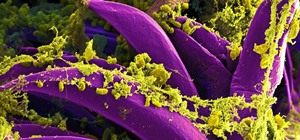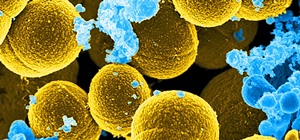What do Leo Tolstoy (writer), Beethoven (composer), Paul Gaugin (artist), and Adolf Hitler (politician) have in common? They are all considered to have suffered from the sexually transmitted disease syphilis.
With the incidence of sexually transmitted infections (STIs) and sexually transmitted diseases (STDs) increasing, a recent study offers information on the resilience and rise of syphilis, a bacteria with a past and an emerging future.
A Little Bit About Syphilis
Known for at least 500 years, syphilis was the cause of a pandemic that started at the end of the 15th century. Estimates at the time suggest more than one million people were infected by the mid-16th century.
The origin of the epidemic strain of syphilis is unclear, and questions remain whether this dangerous strain was already present in Europe, or if it was strengthened by the addition of genetic material carried by voyagers returning from the Americas.
Along with diseases like gonorrhea and chlamydia, syphilis is a bacteria most commonly spread through sexual contact. Syphilis can have mild initial symptoms like a painless sore, or no symptoms at all. As the disease progresses, a severe rash appears and the disease eventually causes blindness or damage to internal organs, and eventually death. The truly terrifying and oft-debated condition of neurosyphilis can also occur if the bacteria spreads to the brain.
Once untreatable, the discovery of penicillin was thought to have rooted the damage and disease of syphilis firmly in the past. But that's no longer the case.

The Re-Emergence of Syphilis & Other STDs
In a report released in October 2016, the Centers for Disease Control and Prevention (CDC) noted that the "total combined cases of chlamydia, gonorrhea, and syphilis reported in 2015 reached the highest number ever." Responding to the question of "why," the report cites budget cuts to state health agencies that formerly provided information, screening, and treatment services for STDs.
The health outcomes of syphilis — miscarriage, stillbirth, blindness or stroke — can be devastating. The resurgence of congenital syphilis and the increasing impact of syphilis among gay and bisexual men makes it clear that many Americans are not getting the preventive services they need.
Escalating Case Numbers & Antibiotic-Resistant Bacteria
In recent decades, as syphilis cases have surged, questions are rising about the effectiveness of front-line antibiotic treatment against the disease. As outlined in the journal Nature Microbiology in December 2016, a multinational research team, led by the University of Zurich, took a look at syphilis using whole-genome sequencing.
Comparing the syphilis bacteria Treponema pallidum and related bacteria such as Treponema pertinue, which causes a disfiguring condition called yaws, researchers followed the bacteria back to a common ancestor in the 17th century. Tracing the syphilis bacteria forward, the analysis reveals a genetic link between bacteria strains that cause syphilis today and resistant bacteria strains that emerged in the 1950s after the introduction of antibiotics.
"There have been many questions regarding the origin of syphilis since its appearance on the world stage 500 years ago," study researcher Homayoun C. Bagheri, a former professor at the UZH Institute for Evolutionary Biology and Environmental Studies, noted in a UZH press release. "By combining an evolutionary and an epidemiological approach, we were able to decipher the genetic relation between strains infecting individuals today, and also trace the emergence of a pandemic cluster with high frequency of antibiotic resistance."
The research suggests infections caused by this post-1950 cluster are resistant to azithromycin, an important drug commonly used to treat syphilis and other STDs.
Into the Future with Drug-Resistant STDs
In August 2016, the World Health Organization released new treatment guidelines for gonorrhea, syphilis, and chlamydia, noting that all three infections are showing increasing signs of multi-drug resistance. Syphilis displays resistance to azithromycin, the antibiotic that is the second drug of choice for treating its infection.
The good news is that, so far, no Treponema strains have been detected that are resistant to penicillin, the first-line antibiotic for syphilis treatment.
According to the CDC, 395,216 cases of gonorrhea, more than 1.5 million confirmed cases of chlamydia, and 23,872 cases of syphilis were reported in 2015. Jonathon Mermim, director of the CDC's National Center for HIV/AIDS, Viral Hepatitis, STD, and Tuberculosis Prevention, wrote in a blog about the worrisome appearance of gonorrhea resistant to azithromycin, saying:
This is concerning. Increased azithromycin resistance will diminish our ability to cure patients. There are very limited options for treating gonorrhea if the bacteria become resistant to current treatments.
With active research efforts on all fronts to find novel drugs and procedures to treat quickly-mutating bacteria, new answers are needed to address old and re-emerging diseases.
Just updated your iPhone? You'll find new emoji, enhanced security, podcast transcripts, Apple Cash virtual numbers, and other useful features. There are even new additions hidden within Safari. Find out what's new and changed on your iPhone with the iOS 17.4 update.




























Be the First to Comment
Share Your Thoughts